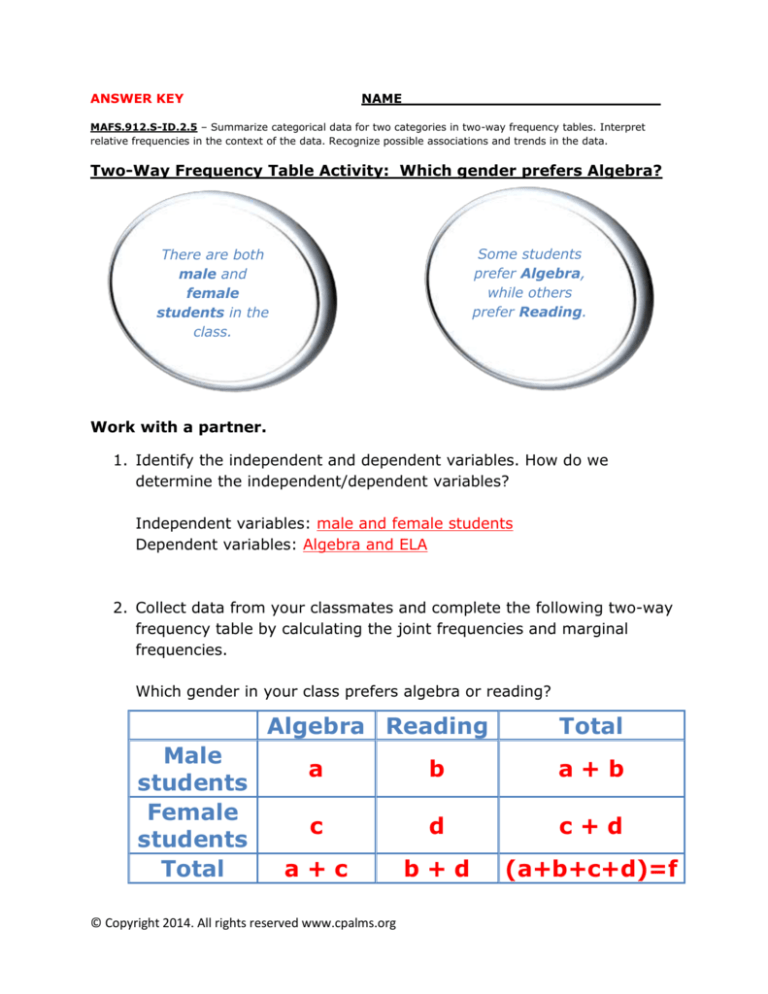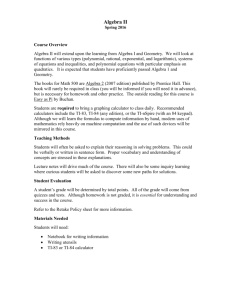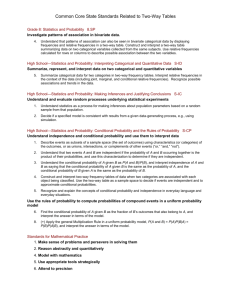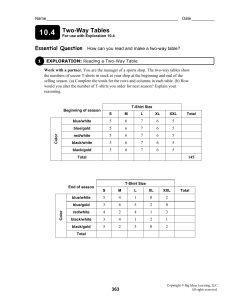
ANSWER KEY
NAME_____________________________
MAFS.912.S-ID.2.5 – Summarize categorical data for two categories in two-way frequency tables. Interpret
relative frequencies in the context of the data. Recognize possible associations and trends in the data.
Two-Way Frequency Table Activity: Which gender prefers Algebra?
Some students
prefer Algebra,
while others
prefer Reading.
There are both
male and
female
students in the
class.
Work with a partner.
1. Identify the independent and dependent variables. How do we
determine the independent/dependent variables?
Independent variables: male and female students
Dependent variables: Algebra and ELA
2. Collect data from your classmates and complete the following two-way
frequency table by calculating the joint frequencies and marginal
frequencies.
Which gender in your class prefers algebra or reading?
Algebra Reading
Male
students
Female
students
Total
Total
a
b
a+b
c
d
c+d
a+c
b+d
(a+b+c+d)=f
© Copyright 2014. All rights reserved www.cpalms.org
3. Use the data in #2 to complete the two-way relative frequency table.
Male
students
Female
students
Total
Algebra
Reading
Total
a/f
b/f
(a+b)/f
c/f
d/f
(c+d)/f
(a+c)/f
(b+d)/f
100%
4. Find the conditional frequency of students surveyed who are (a) male
and prefer algebra; (b) female and prefer algebra.
a. a/f
b. c/f
5. Who is more likely to like algebra, male students or female students?
Justify your answer.
Answers may vary. This is great for class discussion.
6. Give a clear summary of (a) a two-way frequency table and (b) the
relative frequency.
a. A two-way frequency table is a powerful tool for examining the
relationships between categorical variables. Two-way tables
represent a table of counts. The entries in the body of the table are
the joint frequencies. The entries in the “total” row and the
“total” column are the marginal frequencies.
b. The relative frequency is used when we want to compare the
different classes and the classes to the entire data set. The relative
frequencies in the body of the table are called the conditional
frequencies. The conditional frequencies can show relative
frequency for the whole table, for the rows, or for the columns. In
this lesson, we calculated conditional frequency for the whole table.
© Copyright 2014. All rights reserved www.cpalms.org










